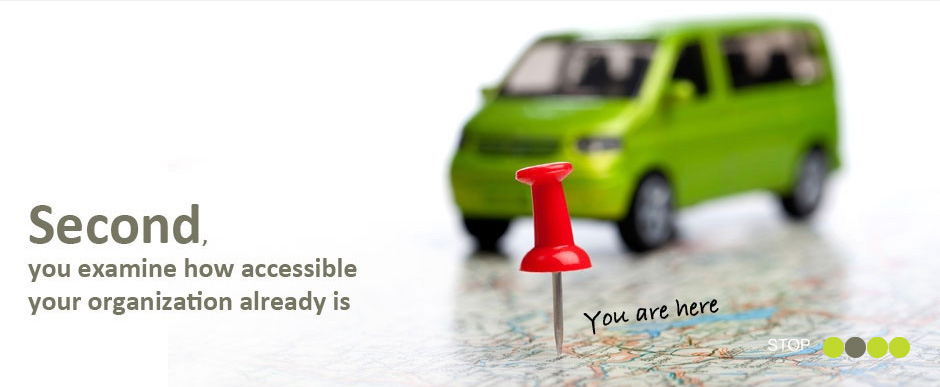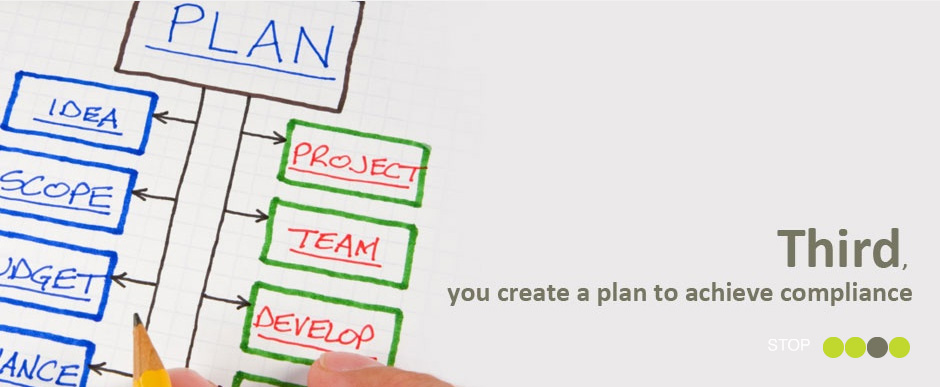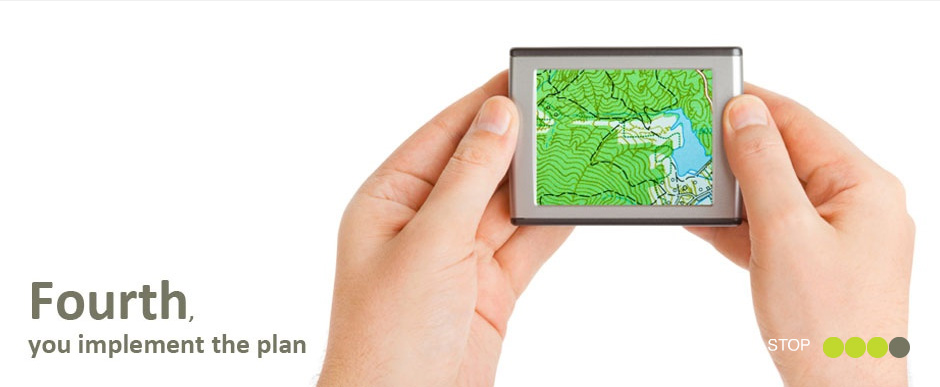AccessPATH Resources
This page provides additional information to people using our People Access AccessPATH Guide. It is organized under the same section headings as your guide.
Helping people with disabilities to access your products and services is not difficult – it takes some knowledge, a little understanding, and a desire to help. Essentially, your help should cover 3 areas:
- Providing appropriate signage so that people know what you provide and where to locate the required assistance. For example, a sign showing that “wheelchair access is on the south side of the building”.
- Ensure that all services and products are showcased in ways that suit each individual’s disability – you may need to read more about the Types of Disabilities to ensure you help appropriately.
- Training staff. Your own employees should know and understand the different types of disabilities and be prepared to assist a person with a disability in a manner appropriate to that person.
Types of Disabilities
The Accessibility for Ontarians with Disabilities Act, 2005 (AODA) covers temporary, short term, long term, and permanent disabilities under the following 8 categories:
- Vision loss
Vision loss may be total or partial and can be caused by congenital factors or a disease such as, to name just a few, Macular Degeneration, Cataracts, Myopia or Astigmatism.
A blind person often carries a white walking stick and may be accompanied by a support person or a service animal. - Hearing loss
People with hearing loss may be deaf (unable to hear anything), or partially deaf, and may fall into one of the following categories: Deafened (born with hearing but have subsequently lost the ability to hear); Oral deaf individuals who were either born deaf or who lost their hearing before learning to speak; Persons with a loss of hearing, who use their own residual hearing and speech when communicating.
People with hearing loss often wear hearing-aids or use forms of Pocket-Talkers (microphone and headset devices). They may find a Phone Amplifier useful. People with hearing loss can also use TTY devices (a small keyboard and display), email packages, and of course the American Sign Language, or another accepted alphabet such as Langue des signes quebecoise (LSQ), to communicate. - Deaf-blind (combination of hearing and vision loss)
Approximately 50% of deaf-blind people were born deaf or with a hearing loss, and then developed blindness as they aged, due to Retinitis Pigmentosa. The causes of deaf-blindness can be a trauma at birth or many of the same factors cited above for either vision or hearing loss.
Deaf-blind people may use the same types of assistive devices as people with hearing and/or vision loss use (see above). - Physical disabilities
People with a physical disability may find it difficult to sit, stand or move about freely.
Physical disabilities can be caused by spinal cord injuries, muscular dystrophy, multiple sclerosis, arthritis, cerebral palsy or through the amputation of a limb.
People with physical disabilities may use wheelchairs, crutches, canes, walkers, scooters, or may need elevators to move between floors of a building. - Mental health disabilities
Mental health disabilities impair thinking, feeling, and behaviour. They may interfere with a person’s capacity to enjoy relationships or to be productive. Examples include bipolar disorder, periods of alternating euphoria and depression; major depression, a serious illness affecting a person’s sleep, appetite, mood, concentration, and social behaviour; schizophrenia, which impairs a person’s thinking, management of emotions, decision-making, and his or her relationship to others.
People with mental health disabilities may need assistance from support people or service animals, portable listening devices, or portable digital assistants. - Intellectual or developmental disabilities
People with intellectual or developmental disabilities may have below-average IQs. They may experience problems communicating, looking after themselves, or being socially adept.
Examples of intellectual or developmental disabilities include Down’s Syndrome and can be caused by a serious head injury or an infection such as Meningitis.
People with intellectual or development disabilities sometimes make use of assistive devices such as large display calculators, alarm watches, support persons or service animals, and voice-actuated recorders. - Learning disabilities
Learning disabilities affect a person’s ability to understand verbal or non-verbal forms of communication. Non-verbal information can be written, audial (pod-casts, for example), or in arithmetic (handing or receiving change, for example).
Examples of learning disabilities include Dyslexia which interferes with a person’s ability to read or understand written words, Dyscalculia, a difficulty with numbers, or Dysgraphia, a difficulty writing words by hand.
People with learning difficulties sometimes make use of assistive devices such as Optical Character Recognition readers (which read aloud written information), digital dictionaries, calculators that speak the results out loud, and voice-actuated recorders. - Speech or language disabilities.
People with speech or language disabilities may have difficulty articulating, may speak softly, or may lack a range of expression. Examples of speech and language disorders include: stuttering; repeating groups of letters; an inability to say specific words; and Aphasia, which impairs a person’s ability to comprehend written or spoken language.
This link provides details on the types of disabilities and suggests ways you can learn to recognize and identify them. The sections below on this page provide tips for helping people with disabilities, and are categorized according to type.
Feeling Comfortable with People with Disabilities
People sometimes feel uncomfortable around a person with disabilities. They worry that they may say or do something to upset the person. The best way to remedy this situation is to provide adequate training to your staff. People Access provides inexpensive e-learning modules specifically for this purpose.
The following general suggestions will help you to assist people with disabilities more effectively:
- Treat people in the same way that you like to be treated. Communicate in a relaxed manner and always be courteous – it is perfectly acceptable to ask people to repeat statements or for you to do the same if a misunderstanding arises.
- The expression “See you later” is acceptable to someone with reduced vision, and “Did you hear about…?” will usually not upset someone with reduced hearing.
- Treat people with disabilities with respect and courtesy.
- Treat adults with disabilities as adults, no matter how severe the disability appears.
- Offer assistance when you feel it is needed, but allow the person with a disability the option of refusing your help or requesting that you provide it in a different manner. Asking, “How may I help you” is the simplest way to offer the correct kind of assistance.
- Give people with disabilities the freedom to do things for themselves where possible, and ensure that you give them the amount of time they need, even if it takes longer or they appear to be making mistakes.
- Respect an individual’s personal space and do not touch, handle or manipulate any assistive device unless asked to do so by the owner.
- Service animals are working when they are accompanying a person with disabilities. Do not attempt to befriend, pet or feed a service animal.
- Always speak directly to the person with a disability and not to anyone accompanying her or him, such as an interpreter. When speaking with people who use non-verbal or communication devices, speak naturally and don’t raise your voice unless asked to do so.
The following sections provide more depth to the above points. Remember, People Access is here to help – contact us to learn what you should do next, or to take advantage of our free consultation offer.
Helping people with disabilities
Understanding the needs of people with disabilities takes practice and training. If you wish to develop your sensitivity to their needs by experiencing the issues which people with disabilities encounter on a permanent basis, try blindfolding yourself, or wearing ear-plugs. In addition, training in this area is invaluable. People Access offers experiential training workshops where your front-line staff learn first-hand the barriers that customers may encounter.
The following are some ways to meet the needs of people with specific disabilities.
1. Vision Loss
- Always speak in a normal tone of voice.
- Identify yourself and introduce anyone in the group.
- If you have previously met this person, remind him or her by telling them about the previous meeting.
- When speaking in groups, name the person to whom you are speaking.
- Indicate when you move from one place to another and remember to end the conversation by saying “Goodbye”, and perhaps a handshake.
- Always ensure access routes, doorways, and hallways are free of obstructions.
- Describe the person’s environment around him or her. For example, warn people of steps in front of them, or tell them about obstacles, “There is a wall just to your right.”
- Acting as a guide: Begin by asking if the person would like you to act as a guide. Suggest that the person may, if he or she wishes, hold onto your arm. And then walk half a step ahead and listen and ask for instructions.
- If appropriate, offer to read written information.
- Plan ahead to allow adequate time to prepare printed material in alternate formats (e.g. Braille, large print, audiocassette, or diskette).
2. Hearing Loss
- Specify the official language required (English, French or both), when you provide sign language interpreter services.
- Speak clearly. Adjust your pace to enable the sign language interpreter to interpret for the person and to allow the person to respond through the interpreter.
- Consider closed-captioning options.
- Use gestures or write notes for one-on-one discussions.
- Face the person to facilitate lip reading, and ensure you don’t block your lips from view with your hands or other objects.
- Speak directly to the person, not to the interpreter.
- Amplification devices are very sensitive to ambient noise, so reduce or eliminate background noises where possible. If this is not possible, stage conversations of this nature in a quieter place.
3. Deaf-blindness
- People who are deaf and blind communicate with their hands, but some of them can see or hear a little. People communicate with deaf-blind people by using the regular alphabet, the Print-on-Palm alphabet, or the American Sign Language equivalent, to spell out letters on the palm of a person with disabilities. This link explains these alternate alphabets in detail.
- Inform deaf-blind people when you approach them by a simple touch on their shoulder or arm. Gently touch them every now and then to reassure them that you are still there.
- Identify yourself immediately by spelling out your name on his or her palm.
- Never speak to the person’s interpreter; ensure that you always address the person with disabilities directly.
- Inform deaf-blind people of people and activities in their immediate vicinity.
- Let deaf-blind people know when it’s their turn to speak when conducting a group conversation.
- Always inform a deaf-blind person if you are leaving her or him, even briefly, and ensure that he or she is comfortable and secure before you do so.
- Ensure that when standing, a deaf-blind person has something to place his or her hand on (a wall, table or chair back, for example).
- When acting as a guide for a deaf-blind person, go in front of him or her, allow them to hold your arm above the elbow and walk slowly but steadily. Pause when ascending or descending stairs, and ensure that doors remain open when you walk ahead.
4. Physical Disabilities
- Ensure that the furniture or objects in a room accommodate mobility aids such as wheelchairs or scooters.
- Never lean or rest on someone’s mobility aid.
- Do not push someone in a wheelchair unless asked to do so.
- Include physical obstacles and distances when you give directions. (For example, the building is 40 metres to your right, and has a flight of stairs at the entrance.
5. Mental Health Disabilities
- Ask a person who appears to need help what the best way is for you to assist him or her.
- Without being patronizing, offer some words of encouragement by being positive about a person with mental health disabilities’ efforts to accomplish a task.
- Remember the golden rule: be patient, supportive and courteous.
- Provide written checklists or instructions and use large type and double-spaced text.
- Do not touch or speak to service animals when they are working
- Eliminate as many distractions as possible.
6. Intellectual or Developmental Disabilities
- Repeat information when necessary.
- Enunciate your words clearly.
- Give the person enough time to respond.
- Offer and provide needed assistance.
- Speak directly to the person and listen actively.
- To more clearly indicate the beginning and end of each word, pause between each one.
- If the person with a learning disability needs to remember information at a later date, provide it to him or her in written form or as a checklist. Written communications should use large font-sizes and be double-spaced.
- Provide calculators to people who need to do arithmetic calculations.
7. Learning Disabilities
- Ask a person who appears to need help, what the best way is for you to assist him or her.
- Always try to be patient, supportive and courteous.
- Provide written checklists or instructions and use large type and double-spaced text.
- Encourage the use of any communication devices the person with a disability may have with them, such as laptops or voice-actuated recorders.
- Do not touch or speak to service animals when they are working
- Eliminate distractions where possible.
- Provide large display calculators if calculations are involved in your providing your services or acquiring your products.
8. Speech or language impairments
- Always try to be patient, supportive and courteous.
- Don’t complete their words or phrases for people with a speech or language disability.
- Where possible, ask questions which can be answered yes or no.
- Try to concentrate on the content and context of the conversation and not the way the person is speaking.
- Speak naturally, and do not alter your own form of communication other than, if necessary, to slow it down.
People with Hidden Disabilities
Disabilities are not always apparent. For example, a person reacting to cleaning products or perfume may have an environmental sensitivity. Or a person with diabetes may have specific dietary requirements, while others may have allergic reactions to foods like shellfish or nuts.
In all cases, remember the golden rule for helping people with disabilities: Be respectful, courteous and patient. Treat a person with a disability the way you would prefer to be treated yourself.





